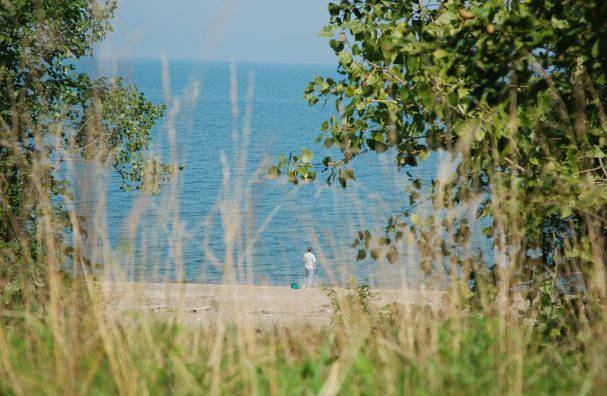Farmer’s Guide to Trucking Regulations available to Ohio Farm Bureau members
The guide includes a farm driver checklist, overview of state and federal regulations and exemptions, CDL qualifications and more.
Read More
Ohio Farm Bureau’s State of the Science Report is published approximately four times per year providing an update on Ohio and National water quality research and emerging issues. The February edition highlights recent findings from researchers related to time lags between conservation practice implementation and the measurement of environmental benefits and the assessment of the water quality impacts related to the implementation of Ohio’s watershed in distress rules.
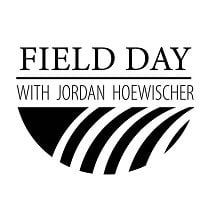 Field Day with Jordan Hoewischer, Ohio Farm Bureau’s director of water quality and research, is an ongoing series of conversations with industry experts and leaders who are helping to shape and secure the future of Ohio’s agricultural industry for generations to come. The first three audio episodes of the series have been focused on water quality research efforts in Ohio and are available via the links below.
Field Day with Jordan Hoewischer, Ohio Farm Bureau’s director of water quality and research, is an ongoing series of conversations with industry experts and leaders who are helping to shape and secure the future of Ohio’s agricultural industry for generations to come. The first three audio episodes of the series have been focused on water quality research efforts in Ohio and are available via the links below.
In episode 1, Jordan talks with Glen Arnold, associate professor and field specialist with OSU Extension, specializing in research related to manure application technology. They discuss Glen’s research into increasing the manure application window by using a dragline hose to side dress a growing corn crop with manure.
Manure Application Technology with Glen Arnold.
In episode 2, Jordan talks with Chris Winslow, director of both Ohio State University’s Stone Laboratory and the Ohio Sea Grant College program, both specializing in research, education and outreach. They discuss the current health of Lake Erie and how it relates to agriculture and the Lake Erie community as a whole.
Lake Erie Water Quality and Research with Chris Winslow.
In episode 3, Jordan visits with John Fulton, associate professor at Ohio State University in the department of food, agriculture and biological engineering. Fulton’s research areas include precision agriculture and machinery automation technology. They discuss some of the latest tools available to Ohio farmers.
Precision Agriculture and New Technology with John Fulton.
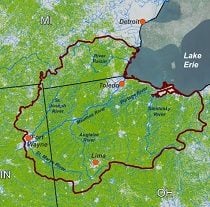 This report complements the 2016 published report, “Effects of Conservation Practice Adoption on Cultivated Cropland Acres in Western Lake Erie Basin, 2003-06 and 2012.” The 2016 report quantified the edge-of-field water quality benefits of conservation practice adoption in the Western Lake Erie Basin (WLEB). This report focuses on in-stream channel dynamics and the role they play in determining the relationship between edge-of-field conservation gains, the gains made toward reducing the sediment and nutrient load delivered to Lake Erie and the reduction in the amount of sediment and nutrients deposited in the ditches, channels, streams and rivers in the WLEB.
This report complements the 2016 published report, “Effects of Conservation Practice Adoption on Cultivated Cropland Acres in Western Lake Erie Basin, 2003-06 and 2012.” The 2016 report quantified the edge-of-field water quality benefits of conservation practice adoption in the Western Lake Erie Basin (WLEB). This report focuses on in-stream channel dynamics and the role they play in determining the relationship between edge-of-field conservation gains, the gains made toward reducing the sediment and nutrient load delivered to Lake Erie and the reduction in the amount of sediment and nutrients deposited in the ditches, channels, streams and rivers in the WLEB.
Nutrients and sediments deposited in the stream network before reaching Lake Erie serve as “legacy sources.” Overtime, the accumulated sediment and nutrients will continue to move downstream into Lake Erie adding to the lag time between conservation practice implementation and the measurement of environmental benefits. Recent studies have indicated that lag times to achieve target load reductions due to the loads from legacy sources can range between 30 and 40 years.
Model simulations provided estimates of sediment, nitrogen and phosphorus loads. For comparative purposes, three levels of conservation practice implementation were evaluated – a no conservation practice scenario, a 2003-2006 conservation practice scenario and a 2012 conservation practice scenario. Farmer surveys provided the necessary information for the 2003-2006 and 2012 scenarios.
Based on the model simulations, farmer implementation of new conservation practices between 2003-2006 and 2012 lead to a positive impact on water quality. Reductions were seen in the amount of sediment, nitrogen, and phosphorus transported at the edge-of-fields, deposited within the stream network and delivered to Lake Erie. It is clear that the voluntary adoption of conservation practices by farmers on their own or through programs and initiatives supported by federal, state or local funds have and continue to make a positive impact on water quality in the Western Lake Erie Basin.
Just looking at the 2012 conservation practice scenario, substantial portions of the edge-of-field derived sediment and nutrients (sediment – 65%, nitrogen – 25%, phosphorus – 37%) end up being deposited in the stream network prior to reaching Lake Erie. These deposited materials contribute to the “legacy effect” adding to the lag time between the time when conservation practices are implemented and when the environmental benefits are measured.
To evaluate potential maximum water quality benefits of conservation practice implementation, a series of hypothetical single and multiple practice conservation scenarios were simulated and compared to the 2012 conservation condition. In each simulated scenario, all watershed acres that could receive treatment under that scenario were treated with the practice(s). It was recognized that although a practice may be applied to a given field for illustration purposes, it does not mean that the practice is the best practice to apply to that field. It is understood that in deciding whether to adopt a given practice, a farmer will consider costs and benefits of adoption, including potential impacts on yields, costs of new equipment purchase, potential interactions between fields, and the time investment required to adopt the new practice. Farmers may also consider benefits associated with conservation practice adoption beyond those related to edge-of-field losses, such as benefits to soil health and stability, wildlife habitat, pollinator benefits, and aesthetics. In the simulated scenarios, the potential impacts of the conservation practices on crop yields or the magnitude of the conservation benefits were not considered.
The most effective simulated conservation scenario, implementation of structural erosion control plus nutrient management plus cover crops, is projected to reduce the phosphorus load to Lake Erie a maximum of 23% with an additional annual cost of $439.5 million. This suggests that achieving the 40% phosphorus reduction target will require addressing all sources of phosphorus. Focusing solely on agriculture will not lead to success.
K. J. Van Meter and N. B. Basu
(2017, Environmental Research Letters 12(8) 084017)
Decreases in nitrogen inputs (atmospheric deposition and fertilizer) have been taking place in many watersheds in the eastern US and Canada but instream N concentrations have been increasing. Legacy sources due to historic accumulation can lead to substantial time lags between implementation of conservation practices and improvements in water quality. In this study, the authors investigate the possible reasons for and quantify the time lag in watershed response resulting from changes in nutrient input. Using long-term nitrogen mass balance data for 16 nested sub-watersheds in a Southern Ontario watershed, the authors were able to quantify N-related time lags. For the 16 sub-watersheds, the mean annual time lag was 24.5 years.
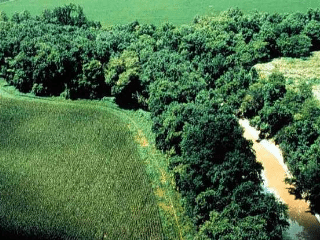 The results of this study suggest that decadal-scale time lags may be the norm in agricultural watersheds and that innovative ways to increase the retention of legacy nutrients may constitute the best opportunity for both reducing stream nutrient concentrations and reducing watershed recovery times. Long time lags to achieving improvements in water quality can lead to disillusionment among stakeholders and policy makers regarding the potential for achieving meaningful changes in water quality. Quantification of the time lags is crucial to policy makers to set appropriate goals for water quality improvement.
The results of this study suggest that decadal-scale time lags may be the norm in agricultural watersheds and that innovative ways to increase the retention of legacy nutrients may constitute the best opportunity for both reducing stream nutrient concentrations and reducing watershed recovery times. Long time lags to achieving improvements in water quality can lead to disillusionment among stakeholders and policy makers regarding the potential for achieving meaningful changes in water quality. Quantification of the time lags is crucial to policy makers to set appropriate goals for water quality improvement.
Stephen J. Jacquemin, Laura T. Johnson, Theresa A. Dirksen, and Greg McGlinch
(2018, Journal of Environmental Quality 47:113–120)
 Grand Lake St. Marys is a productive, shallow, manmade lake in west central Ohio. The lake’s watershed is dominated by row-crop agriculture and livestock production. Over time, nutrient delivery to the shallow lake led to the occurrence of harmful blue-green algal blooms with elevated levels of the toxin microcystin. As a result, the State of Ohio designated Grand Lake St. Marys a “watershed in distress” on Jan. 18, 2011. A watershed in distress is defined as a watershed that has aquatic life and health that is impaired by nutrients from agricultural uses. Threats to public health, drinking water supplies, recreation and public safety are taken into consideration when a watershed is designated in distress. The designation triggered the implementation of a new set of rules requiring all farms generating or using manure to operate under an approved nutrient management plan and placed a ban on the winter application of manure.
Grand Lake St. Marys is a productive, shallow, manmade lake in west central Ohio. The lake’s watershed is dominated by row-crop agriculture and livestock production. Over time, nutrient delivery to the shallow lake led to the occurrence of harmful blue-green algal blooms with elevated levels of the toxin microcystin. As a result, the State of Ohio designated Grand Lake St. Marys a “watershed in distress” on Jan. 18, 2011. A watershed in distress is defined as a watershed that has aquatic life and health that is impaired by nutrients from agricultural uses. Threats to public health, drinking water supplies, recreation and public safety are taken into consideration when a watershed is designated in distress. The designation triggered the implementation of a new set of rules requiring all farms generating or using manure to operate under an approved nutrient management plan and placed a ban on the winter application of manure.
The purpose of this study was to assess changes in water quality following the implementation of the watershed in distress rules in 2011. The authors assessed variation in total suspended solids (TSS), particulate phosphorus (PP), soluble reactive phosphorus (SRP), nitrate nitrogen (NO3) and total Kjeldahl nitrogen (TKN) concentrations from daily Chickasaw Creek samples spanning 2008 to 2016. Comparison between pre- and post-regulation time periods documented notable changes in water quality have occurred following implementation of the rules. While the largest reductions were observed during the winter when the manure application ban is in effect, year-round reductions were also observed. Implementation of the manure application ban, nutrient management plans, installation of grass waterways, manure storage structures, manure transport and cover crops are attributed to the observed water quality changes.
The findings of this study indicate that while reductions in sediment and nutrients have occurred, nutrient loading to Grand Lake St. Marys continues to be a challenge. The authors recommend that future conservation efforts in the watershed should focus on management practices that focus on reducing nutrient concentrations as well as reducing runoff volume to continue to improve the water quality of Grand Lake St. Marys.


The guide includes a farm driver checklist, overview of state and federal regulations and exemptions, CDL qualifications and more.
Read More


ODA will enroll 500,000 acres into the program for a two-week sign-up period, beginning April 22, 2024, through May 6, 2024. Contact local SWCD offices to apply.
Read More

Katie Share of Columbus has been named ExploreAg and Youth Development Specialist for Ohio Farm Bureau.
Read More

Mary Klopfenstein of Delphos has been named Young Ag Professional and Ag Literacy Program Specialist for Ohio Farm Bureau.
Read More

The plan has been updated to give sole proprietors access to more rate stability and a smart solution that offers potential savings on health care.
Read More

The American Farm Bureau Federation, in partnership with Farm Credit, is seeking entrepreneurs to apply online by June 15 for the 2025 Farm Bureau Ag Innovation Challenge.
Read More

Adele Flynn of Wellington has been elected treasurer of the Ohio Farm Bureau Federation and now holds the third highest elected office in Ohio’s largest and most influential farm organization.
Read More

Producers are urged to work with their veterinarian to practice enhanced biosecurity measures and review and limit cattle movements within production systems.
Read More

The changing seasons bring with them the need to thoroughly inspect pole barns for any damages that may have occurred during the winter months.
Read More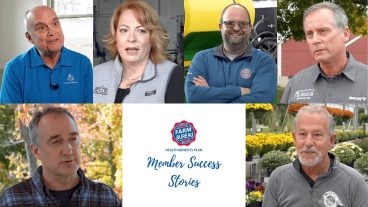
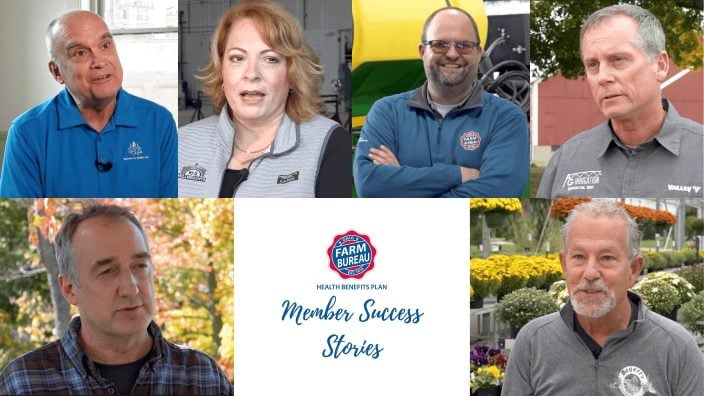
Hundreds of Ohio businesses and sole proprietors are raving about Ohio Farm Bureau’s Health Benefits plan with lower, predictable costs and easy enrollment and administration options.
Read More